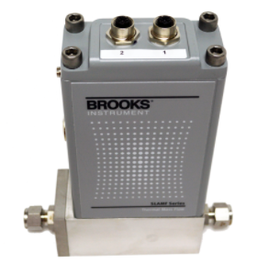Introduction to the measurement principle video of thermal mass flow.
ITWジャパン
When using a thermal mass flow meter, it is very important to understand its measurement principle. Setting high-precision and stable process conditions is not only essential but also very beneficial for troubleshooting and early detection. The sensor consists of a heater (H) placed in the center of the tube and temperature sensors (T1 and T2) positioned equidistantly on either side. The heater is continuously supplied with properly controlled power, generating heat. When there is no flow in the sensor tube, the heat from the heater is evenly transferred to temperature sensors T1 and T2, resulting in both being at the same temperature. However, when there is flow in the direction indicated by the arrows in the diagram, the fluid carries heat away from T1, causing its temperature to drop, while T2 receives heat, resulting in a temperature increase. The resulting temperature difference between T1 and T2 becomes a function of the mass flow rate of the fluid within the sensor tube. This is processed appropriately and output as an electrical signal representing the mass flow rate. (This is an excerpt from the original text.) https://www.youtube.com/watch?v=XKpX3rrt1qc [ITW Japan Co., Ltd. Brooks Instrument]







